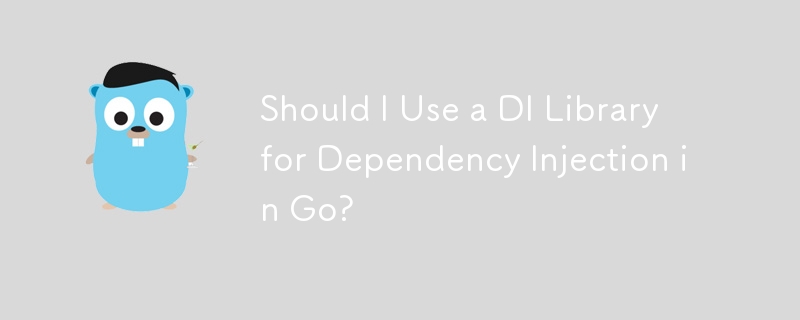Found a total of 10000 related content

PHP Dependency Injection Container Performance Benchmarks
Article Introduction:Key Takeaways
Dependency Injection Containers (DIC) are a key tool for maintaining codebases in larger PHP applications and frameworks, but can impact performance. Some of the well-known DICs for PHP include PHP-DI, Symfony\DependencyInjection, Ze
2025-02-20
comment 0
667

What is a Dependency Injection Container (DIC) and why use one in PHP?
Article Introduction:Dependency Injection Container (DIC) is a tool that manages and provides object dependencies for use in PHP projects. The main benefits of DIC include: 1. Decoupling, making components independent, and the code is easy to maintain and test; 2. Flexibility, easy to replace or modify dependencies; 3. Testability, convenient for injecting mock objects for unit testing.
2025-04-10
comment 0
511
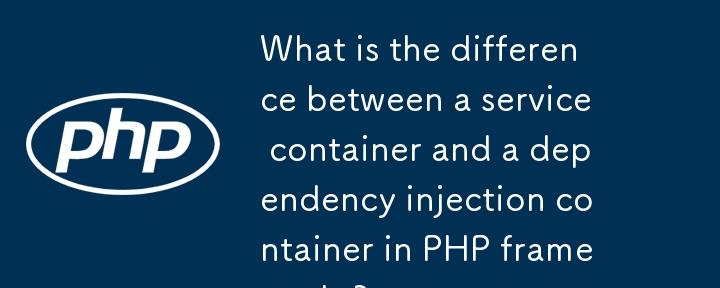
What is the difference between a service container and a dependency injection container in PHP frameworks?
Article Introduction:Service containers and dependency injection containers are often mentioned in the PHP framework. Although they are related, they are different. Dependency injection containers (DICs) focus on automatically parsing class dependencies, such as injecting objects through constructors without manual instantiation. The service container extends its functions on this basis, including binding interfaces to specific implementations, registering singletons, managing shared instances, etc. When using it, if the class dependency resolution or cross-frame scenarios are discussed, it should be called DIC; if it involves service management within the framework, it is called a service container. The two are often integrated in modern frameworks, but understanding their differences can help to gain a deep understanding of the framework mechanism.
2025-06-04
comment 0
845
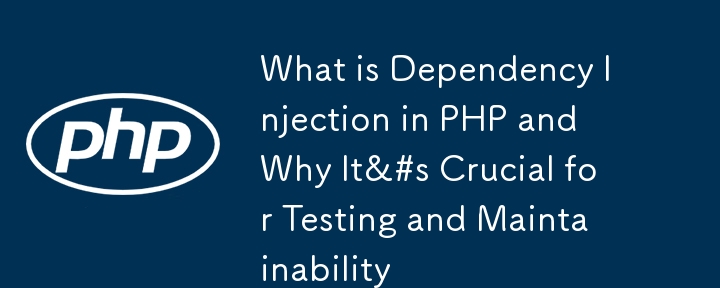

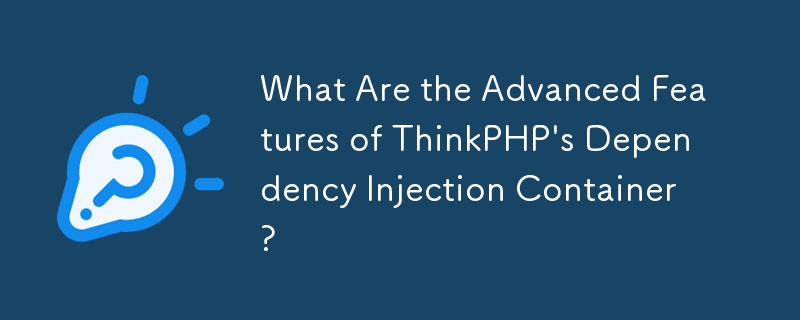

How to Build Your Own Dependency Injection Container
Article Introduction:This article discusses how to build a simple dependency injection container (DI container) PHP package. All code in the article, including PHPDoc annotations and unit tests (100% code coverage), has been uploaded to the GitHub repository and listed on Packagist.
Key points:
Building DI containers helps developers understand the basic principles of dependency injection and the working mechanism of containers.
DI containers have two main functions: "dependency injection" and "container". It needs to be able to instantiate and include services using constructor injection or setter injection methods.
Symfony dependency injection containers can be used as a reference for creating custom containers. It divides container configuration into parameters and services, allowing secure storage
2025-02-15
comment 0
937

Understanding Symfony Bundle Configuration and Service Container
Article Introduction:This article explores Symfony2 bundle configuration and its interaction with the dependency injection container. These concepts can be challenging for newcomers, particularly those unfamiliar with dependency injection. The examples here use YAML, a
2025-02-22
comment 0
876

PHP Dependency Injection Container: A Quick Start
Article Introduction:APHPDependencyInjectionContainerisatoolthatmanagesclassdependencies,enhancingcodemodularity,testability,andmaintainability.Itactsasacentralhubforcreatingandinjectingdependencies,thusreducingtightcouplingandeasingunittesting.
2025-05-13
comment 0
1198

Service Container in Laravel/Symfony:?How it enables DI.
Article Introduction:The article discusses the Service Container in Laravel and Symfony, focusing on how it facilitates Dependency Injection (DI). It explains the benefits of using the Service Container for DI, including loose coupling, improved testability, and centrali
2025-03-28
comment 0
1190

Best Practices for Dependency Injection in PHP
Article Introduction:The reason for using Dependency Injection (DI) is that it promotes loose coupling, testability, and maintainability of the code. 1) Use constructor to inject dependencies, 2) Avoid using service locators, 3) Use dependency injection containers to manage dependencies, 4) Improve testability through injecting dependencies, 5) Avoid over-injection dependencies, 6) Consider the impact of DI on performance.
2025-05-08
comment 0
1051

Dependency Injection for PHP: a quick summary
Article Introduction:DependencyInjection(DI)inPHPisadesignpatternthatmanagesandreducesclassdependencies,enhancingcodemodularity,testability,andmaintainability.Itallowspassingdependencieslikedatabaseconnectionstoclassesasparameters,facilitatingeasiertestingandscalability.
2025-05-11
comment 0
976
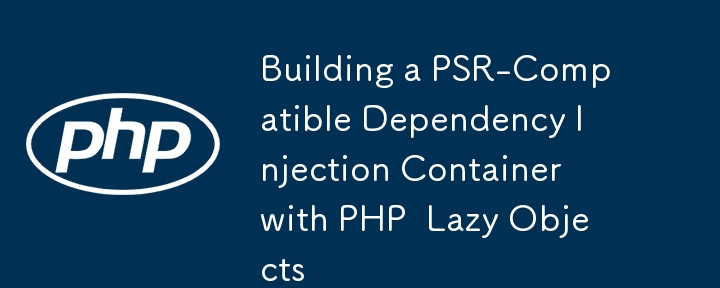
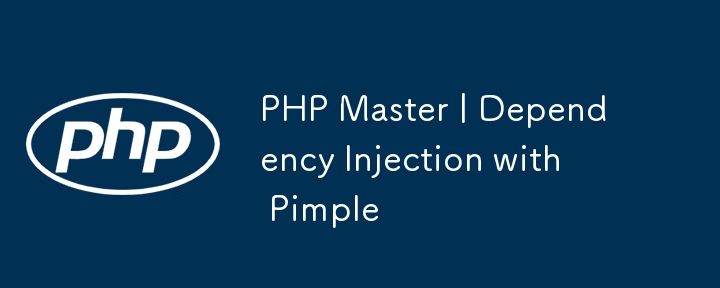
PHP Master | Dependency Injection with Pimple
Article Introduction:Core points
Dependency injection is a key concept in application development, and by injecting dependencies into modules rather than hard-code them, you can write more efficient and more maintainable code.
Pimple is a simple dependency injection container that uses PHP's closure to define dependencies in a manageable way, helping to keep your code maintainable.
Two main techniques for injecting dependencies are constructor-based dependency injection and setter-based injection, each with its own advantages and disadvantages.
Pimple supports the DRY principle of software development by acting as a container that defines dependencies, avoiding duplication, making it easier to manage and centralize services in applications.
Pimple also offers advanced features such as using sharing
2025-02-24
comment 0
697

Dependency Injection in PHP: Code Examples for Beginners
Article Introduction:You should care about DependencyInjection(DI) because it makes your code clearer and easier to maintain. 1) DI makes it more modular by decoupling classes, 2) improves the convenience of testing and code flexibility, 3) Use DI containers to manage complex dependencies, but pay attention to performance impact and circular dependencies, 4) The best practice is to rely on abstract interfaces to achieve loose coupling.
2025-05-14
comment 0
948
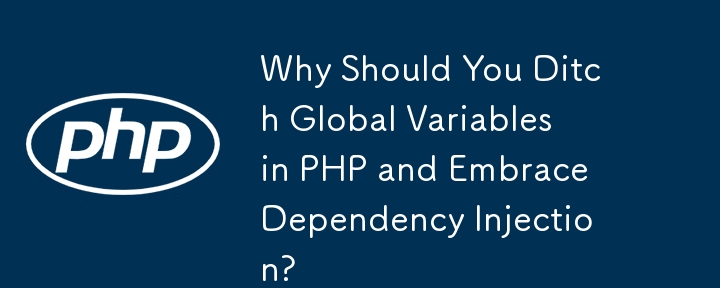
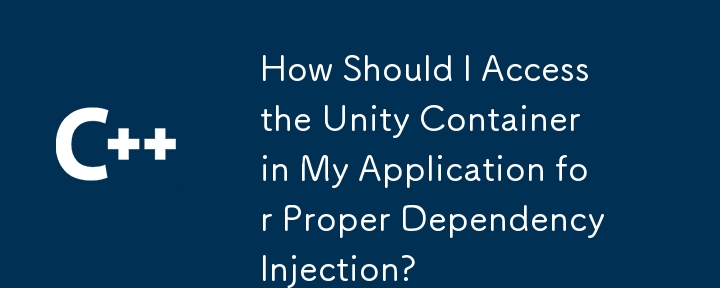

Disco with Design Patterns: A Fresh Look at Dependency Injection
Article Introduction:Core points
Dependency Injection (DI) enables flexible dependency management by separating object creation and usage to enhance reusability of code.
Dependency injection containers simplify the management of object dependencies, especially when the number of dependencies is huge, which is achieved by automating object creation and configuration.
Disco, an annotation-based DI container, simplifies configuration with annotations such as @Bean and @Configuration, thus simplifying the setup of the service.
Disco supports advanced features such as singleton instantiation, delayed loading, and session/request scope management to optimize resource utilization and service lifecycle.
The integration of Disco with Symfony components helps create basic based
2025-02-15
comment 0
789

PHP Attributes (Annotations):?Usage and examples.
Article Introduction:PHP 8 introduces attributes, enhancing code readability and maintainability over PHPDoc comments. They're used for routing, validation, serialization, logging, and dependency injection in frameworks.
2025-03-25
comment 0
567









